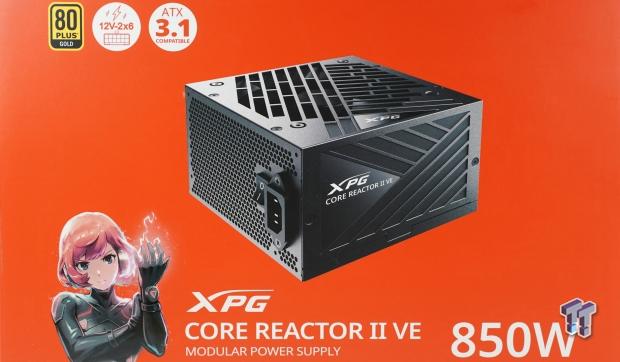The Bottom Line
Pros
- + ATX 3.1 compatible
- + 7-year warranty
- + 600w 12VHPWR cable
Cons
- - MSRP is only $5 less than the non-VE model
- - The main capacitor is Taiwanese, not Japanese, as found in the non-VE model
Should you buy it?
AvoidConsiderShortlistBuyIntroduction, Specifications, and Pricing
A while back, we looked at XPG's Core Reactor II 850w ATX 3.0 PSU, for which we were awarded an Editor's Choice Award with a rating of 97%. XPG has made a value edition of the same PSU called Core Reactor II VE. Featuring the same 80 Plus Gold rating, 600w 12VHPWR connection, and even the same chassis is even the same. This particular 850w VE model is priced at $119.99, while the 850w non VE model is currently going for $99.99 on Amazon.
So, why don't we find out why XPG thought offering this duplicate-looking PSU was necessary?

Packaging
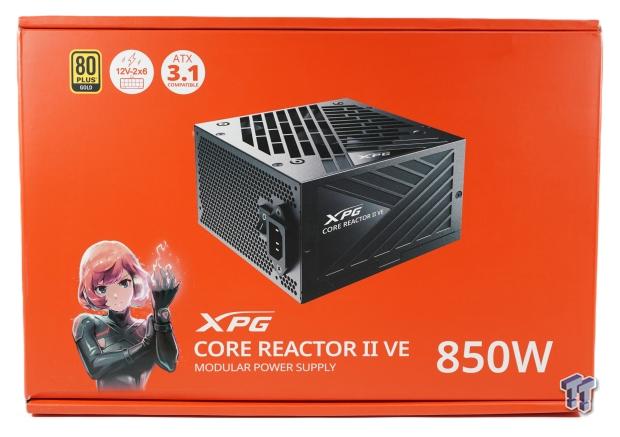
XPG has packaged the Core Reactor II VE in what looks to be the same packaging as all their PSUs: a red external box with Mera on the outside.
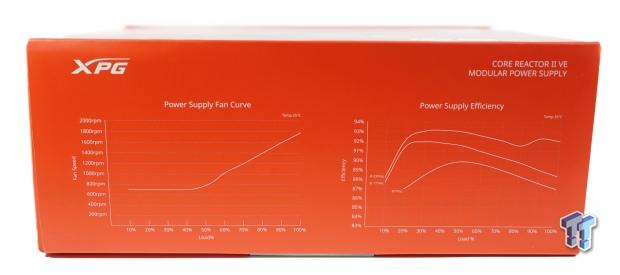
The rear side of the VE packaging shows a familiar fan and efficient curve. It's interesting. We shall be testing whether this version is in line with its non-value counterpart.

Again, the backside of the packaging shows more of the same similarities. However, some key differences aid in cost-saving measures. First, the two included EPS ATX12V CPU cables, which were extended another 100mm to a total of 750mm. Next, the 12VHPWR, now named 12V-2x6, received the opposite treatment, with a 50mm less in length, totaling 600mm. Connectors have been lessened as well, with 1 fewer PCI-E 6+2 to 6+2, 2 fewer SATA, and 2 fewer MOLEX.
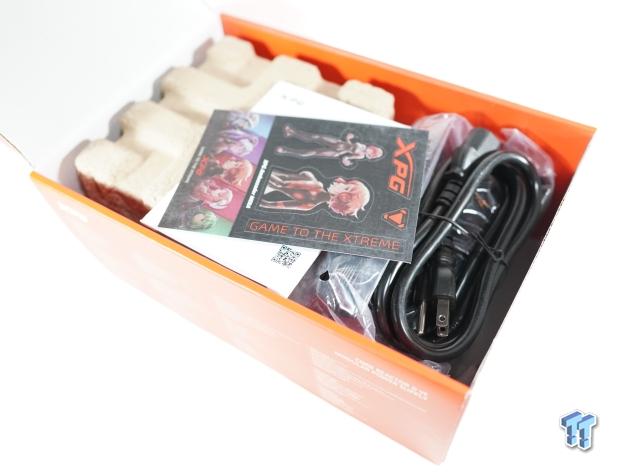
Looking inside, the packaging is downgraded from the original Core Reactor II, with just a corrugated cardboard shell to protect the PSU from damage. It also looks like all the cabling is in a clear plastic bag instead of vinyl. But you still get the Mera stickers.
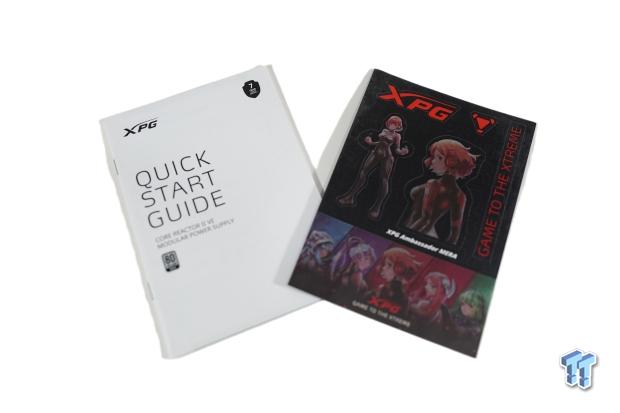
A quick start guide and Mera stickers.
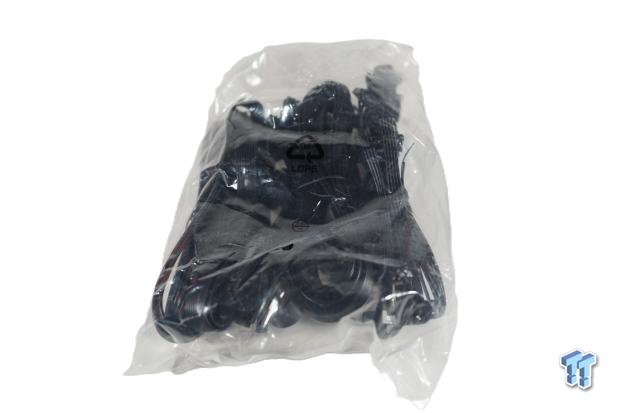
All the cables are in a clear plastic bag instead of a vinyl bag, as in the non-VE model.
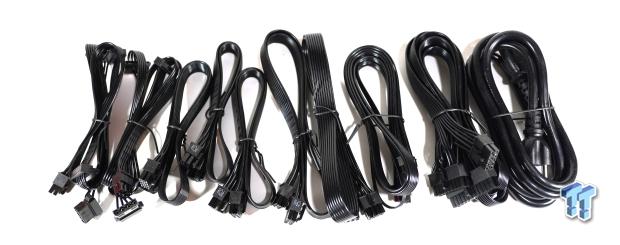
Here are all the cables laid out; notice how none of them have any sleeving, again a cost-saving measure.
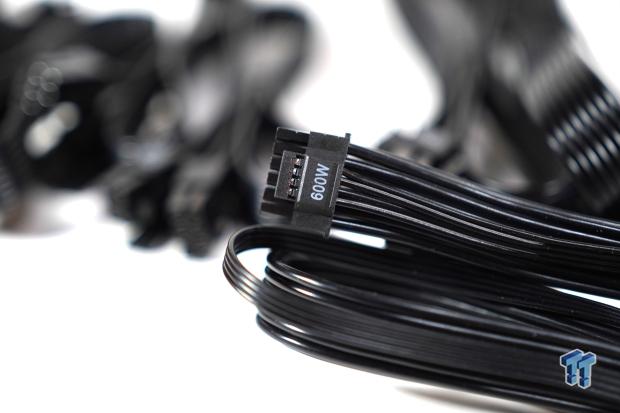
We'll take a closer look at the 600w 12VHPWR connector, which ensures that power-hungry GPUs like the RTX 4080 Super from NVIDIA can still be properly fed.
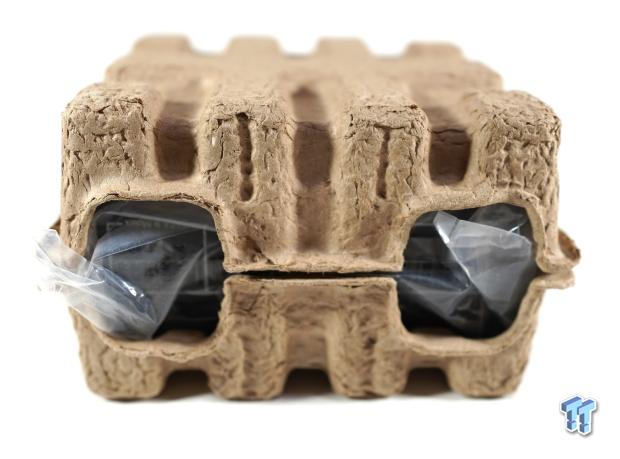
Lastly, the PSU packaging itself is situated with a corrugated cardboard shell and a clear plastic bag for added protection. The non-VE model used soft foam instead of corrugated cardboard, which I am sure is another cost-saving measure.
Outside the XPG Core Reactor II VE 850w ATX 3.0 PSU
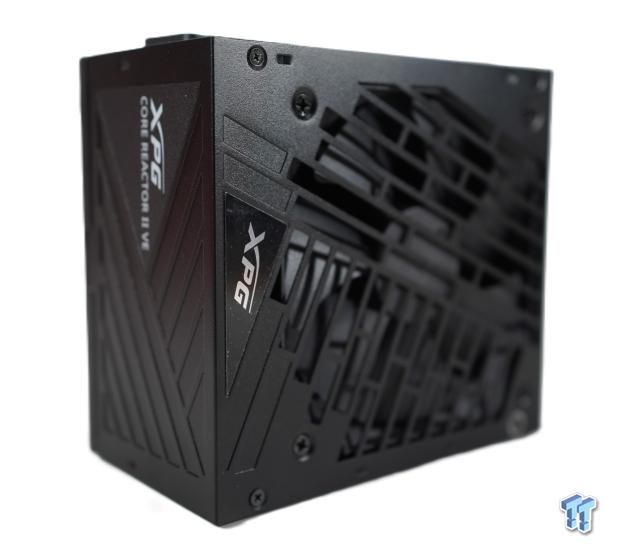
Here is a shot of the angled side of the Core Reactor II VE 850w ATX 3.1 PSU. Aesthetically, the VE model is virtually identical to the non-VE model - there is nothing new to report here.
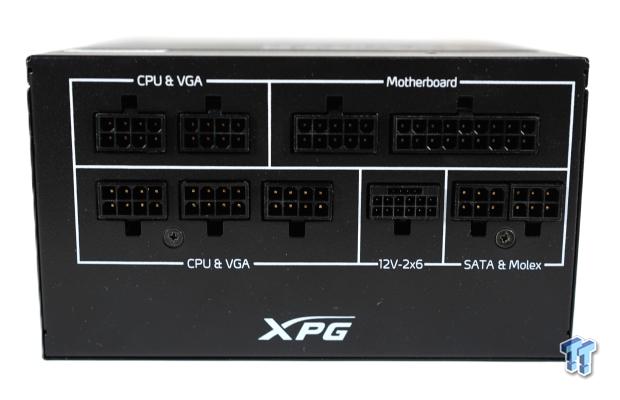
Again, it's more of the same as the non-VE model, other than the 12VHPWR connection is now labeled 12V-2x6.
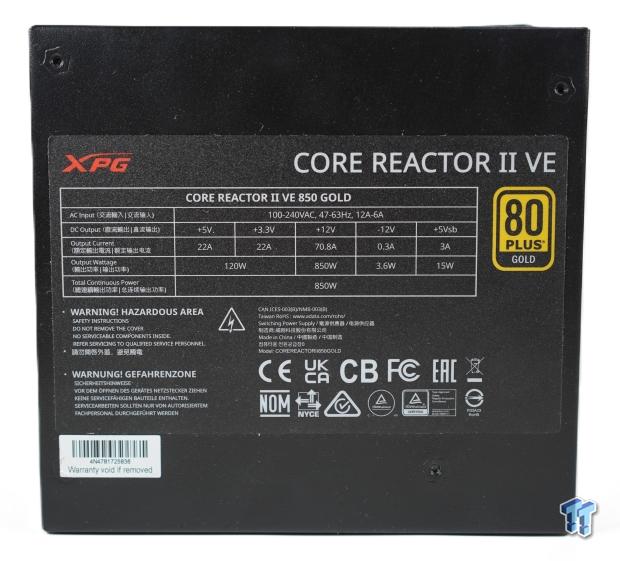
Again, besides adding VE to the product name, the large nomenclature sticker is largely unchanged.
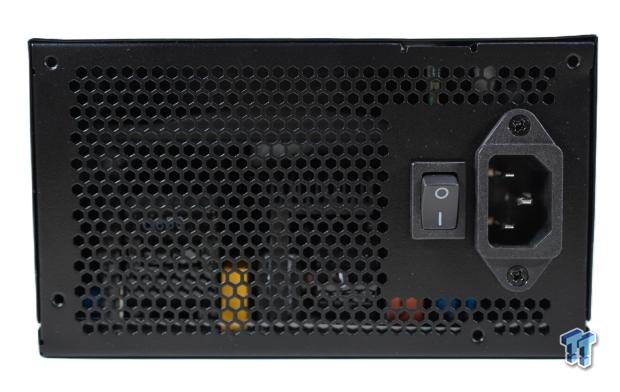
The backside of the Core Reactor II VE has the same configuration as the non-VE model. Again, the back could be more cohesive than the rest of the design, as I stated while reviewing the previous Core Reactor II 850w.
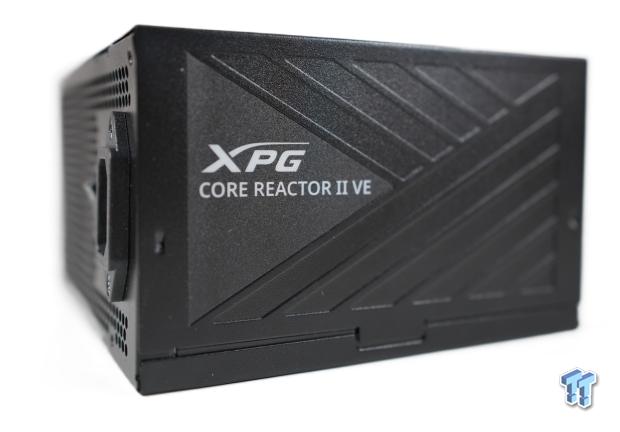
Oh, what a surprise! It looks like the same side as the non-VE model. Do we notice a trend here?
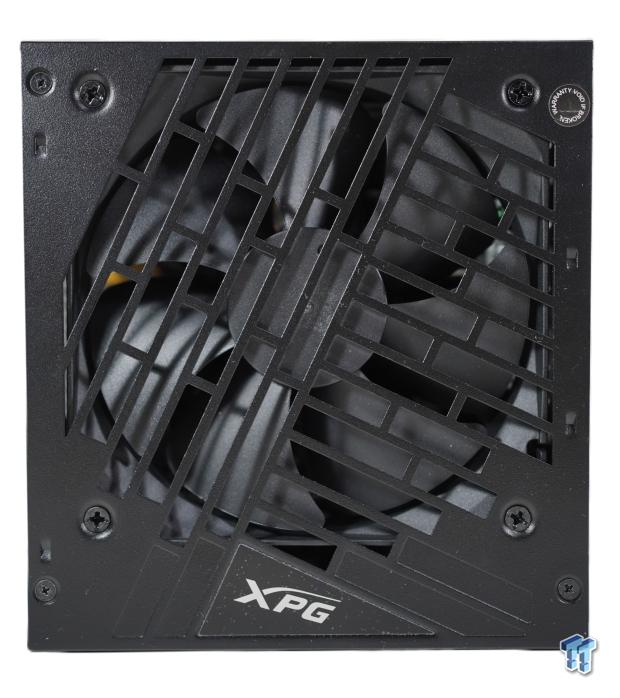
Do I have to say the same thing again?
Inside the XPG Core Reactor II VE 850w ATX 3.0 PSU
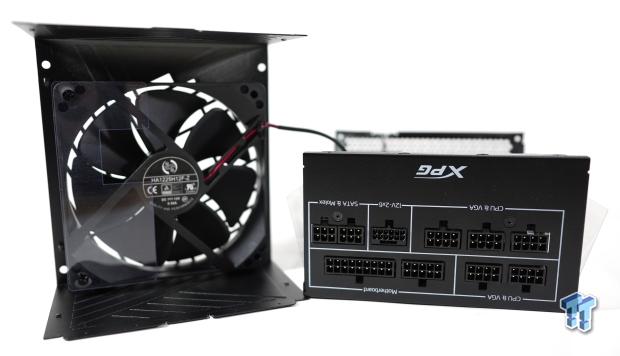
Popping off the top of the Core Reactor II VE was the same as before.
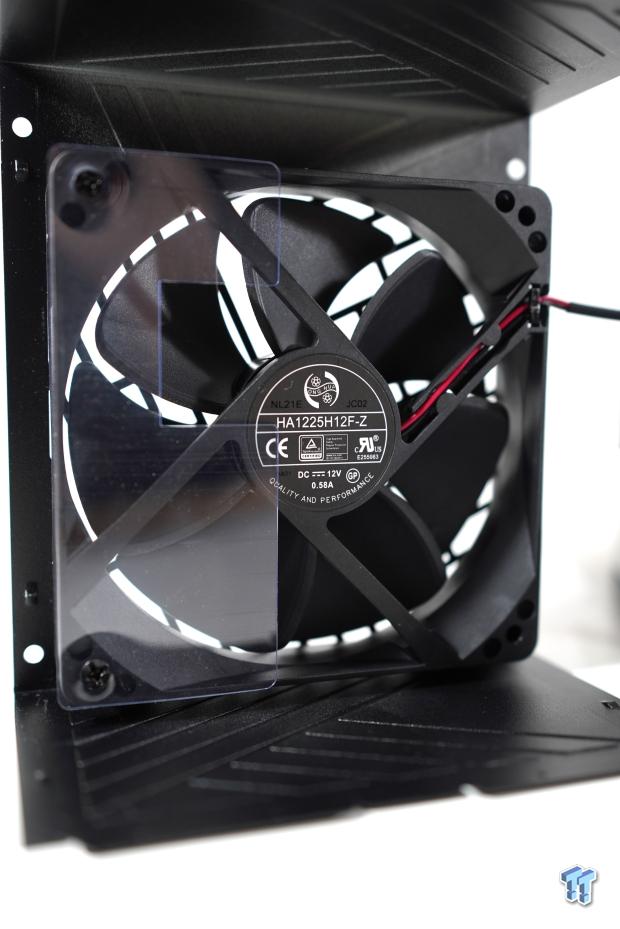
The non-VE model, Ong Hua, model number HA1225H12F-Z, has the same fan and runs at 2200 RPM with 12V at .58A.
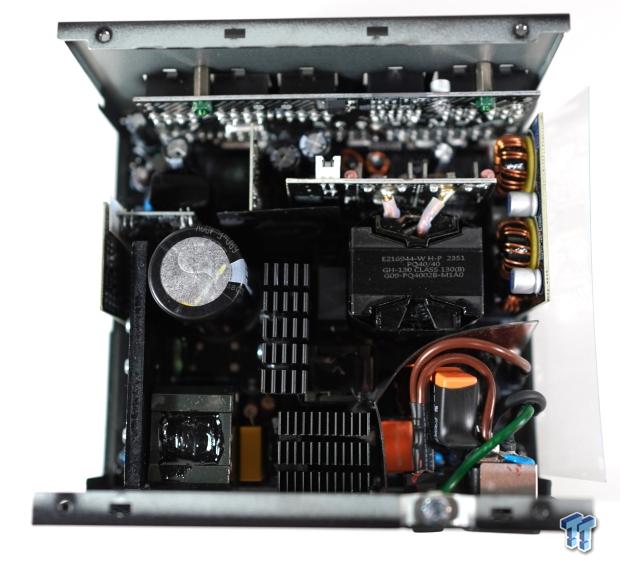
The overall board layout is an exact copy of the non-VE.
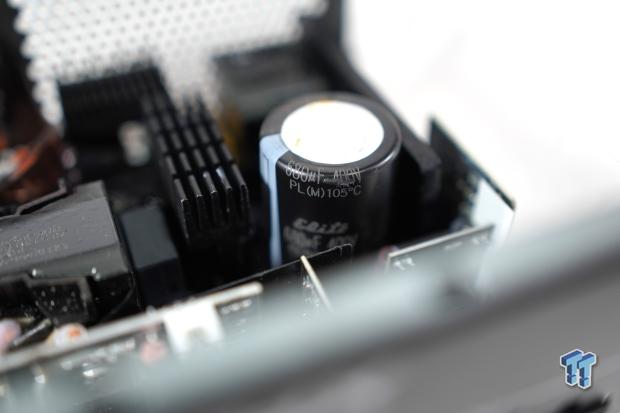
What is that? Is that a different capacitor I spy? Yes, yes, it is. The branded ELITE, made in Taiwan, is rated at 680?F at 400v, unlike the Japanese Nippon Chemi-Con capacitor, rated at 680?F at 450v and found in the non-VE model. Both capacitors from both companies are rated up to 105C in terms of thermal limits.
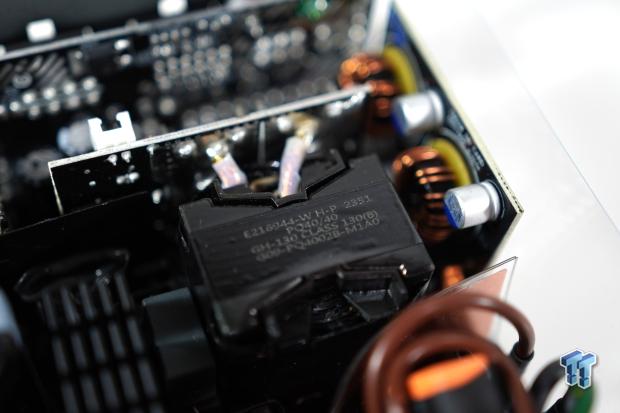
The main transformer also is the same as before.
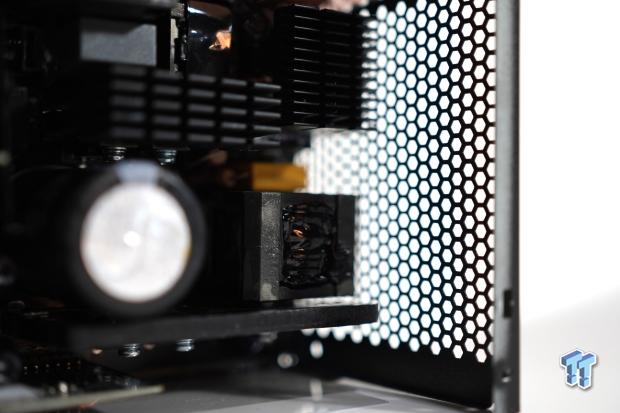
The same goes for the choke.
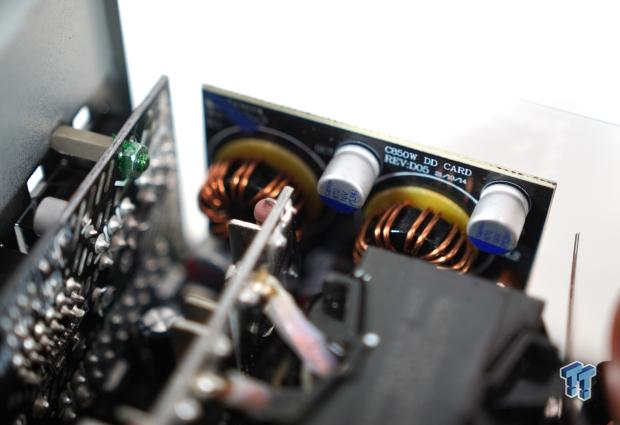
VRMs look unchanged; there is nothing really to see.
Test System, Installation, and Finished Product
- Motherboard: B650 AORUS Elite AX (AMD B650) - Buy from Amazon
- CPU: AMD Ryzen 7 7700X - Buy from Amazon
- Cooler: ARCTIC Liquid Freezer II 360 - Buy from Amazon
- Thermal Interface Material: Thermal Hero NEO 2g - Buy from Amazon
- Memory: Patriot Viper Venom 32GB DDR5 5600 RGB - Buy from Amazon
- Graphics Card: NVIDIA RTX 3090 Founders Edition - Buy from Amazon
- Storage: Corsair MP600 PRO XT Gen4 PCIe x4 NVMe M.2 SSD - Buy from Amazon
- Case: XPG Invader X - Buy from Amazon
- Power Supply: be quiet! Straight Power 12 1000w ATX 3.0 PSU - Buy from Amazon
- OS: Microsoft Windows 11 Pro 64-bit Build 22621 - Buy from Amazon
- Software: AIDA64 Engineer v7.20.6800, CPU-z 2.09.0 x64. GPU-Z 2.57.0, and HWiNFO64 v7.63-5205
Final Thoughts
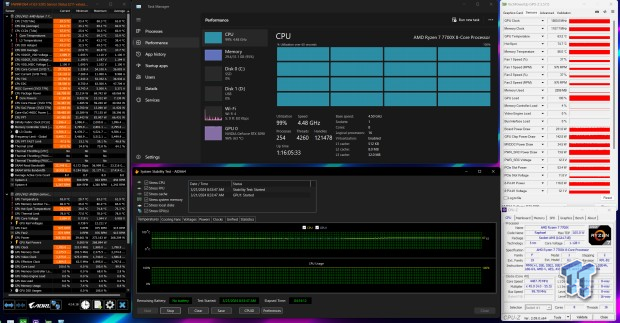
Running the typical ATX hardware components, which consists of an AMD Ryzen 7 7700X running 8 cores (1.128 vcore) and 16 threads, the AM5 motherboard that was used is a B650 AORUS Elite AX, for RAM 32GB of Viper DDR5-5600 from Patriot Memory, and an NVIDIA RTX 3090 FE running at a 75% power limit.
Loading up the XPG Core Reactor II VE 850w ATX 3.1 PSU, the AMD Ryzen 7 7700X, the CPU wattage ran up to only about 68 watts, while the GPU, NVIDIA RTX 3090 FE drew around 268 watts on average. The motherboard, the B650 AORUS Elite AX, draws approximately 36 watts, measured from pins 24 (ground) and 11 (+12V1) with a digital multimeter. The power drawn from the wall was measured with a Killawatt P3 digital electrical usage monitor, read at 422 watts during testing.
The total wattage reported from HWiNFO64 was 336 watts being drawn between the CPU and GPU, adding about 36 watts from the motherboard for 372 watts. Doing some math, this makes the Core Reactor II VE 850w model only 88% efficient at a 50% PSU load, coming up short of attaining the 80 Plus Gold certification; however, the 80 Plus Gold 20% load certification needs only 87%, making the case for a gray area in this ATX 3.1 PSU's 80 Plus Gold certification.
This testing was done for over 4 hours by running the Aida 64 Engineer's System Stability Test. Other monitoring software used was HWiNFO64 v7.63-5205, TechPowerUp GPU-Z v2.57.0, CPU-Z 2.0.9.0.x64, and MSI Afterburner v4.6.4.16255.
So, in the end, is the Core Reactor II VE 850w ATX 3.1 PSU a good PSU? For the most part, it fits the part. Only a few issues with it came up during testing, one of which was the 80 Plus Gold certification at a 50% load, which could be within the margin of error, for which I am aware that my testing methodology is imperfect. However, using a lower-grade capacitor might have something to do with its performance, specifically around the 50% load threshold. Lastly, I am concerned about its price; XPG has set the MSRP at $119.99, exactly $5 under the previous Core Reactor II 850w model, rated for the ATX 3.0 specification, which is of little difference. Look, the Core Reactor II VE 850w ATX 3.1 PSU is not a bad PSU by any means, but the value also needs to be reflected in the pricing.

